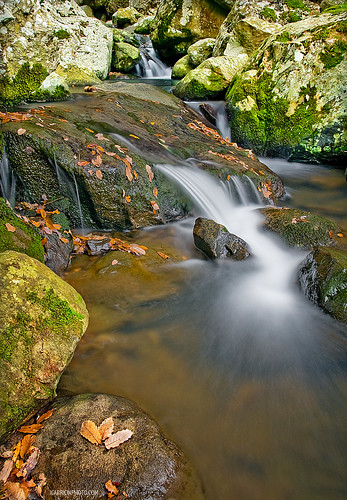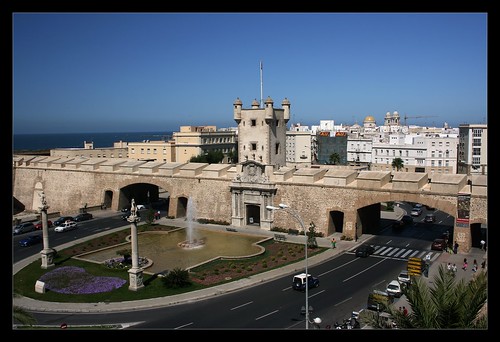
Cadiz is a wonderful city that came famous navigators as Ferdinand Magellan and Amerigo Vespucci. It is very close to Sevilla, another beautiful town in Spain, so it is not surprising that its port is one of the favorites among the highest ranks trans. In fact, about 48 cruise ships dock in Cadiz andalusia months.
Cadiz is a city of tourism with the best beaches of southern Spain. To highlight the local beaches of Caleta and La Victoria. Outside the city of Cadiz, tourist can enjoy the beaches of Zahara, Barbate and Chiclana. This is a small town in southern Spain near the Rock of Gibraltar, with narrow cobbled streets which give it some air Arabic. A few meters from the port is the cathedral. Undoubtedly, this beautiful monument flanked by two high towers capture their attention.
Puerta de Tierra is one of the few defensive structures of the eighteenth century that still stands. Also, Cadiz maintains some links with other countries through its many old buildings. Some of the churches not to be missed are the Church of Santa Cruz and San Felipe Neri, which historically played a decisive role in changing the Spanish constitution. The Holy Cave, where you can see a lot of paintings by Goya, and stately mansions such as the Casa del Almirante and Casa de las Cadenas are other benchmarks in Cadiz.
Weather:
In Cádiz combined Atlantic and Mediterranean climates. According to the calculation made in the last 25 years, it is estimated that the average temperature of Cadiz is 18 º C. The hottest month is August, with a maximum temperature of 34 degrees, while the coldest month is January with a record minimum 9 ° C.
Bus:
Most buses make their exits from the Plaza de la Hispanidad. At least seven of them depart daily for Sevilla, Jerez, El Puerto de Santa María, Algeciras and Tarifa. Other three are going to Ronda, Malaga and Arcos de la Frontera. The company also offers a daily service Servibús six trips to Madrid from the Plaza Elios.
Train:
The train station is right next to the Plaza de Sevilla with 20 and suburban trains that make daily trips between Jerez de la Frontera and El Puerto de Santa Maria, as well as 12 regional routes to and from Seville. On the other hand is a daily service of four trains to and from Cordoba and two more in Madrid and Barcelona.
Car:
The toll of the A-4 that runs from Sevilla to Puerto Real and passes through the east of Cadiz slope 783 pts. You can also take the N-IV, but it has more traffic and thus are driving more slowly.
Local beaches:
The city of Cadiz is situated on a peninsula that is part of the Spanish coast, near the Atlantic Ocean. Also known as Costa de la luz, boasts miles of white sandy beaches, beautiful sunsets and beautiful coastal towns. Part of the Costa de la Luz is located in the province of Huelva, the border between Spain and Portugal, the rest belongs to the province of Cadiz. Between the maritime areas adjacent to Cadiz Tarifa is best known in the extreme south of the Costa de la luz. It is famous for kite surfing and windsurfing. North of Tarifa andalusia Barbate is a town where winds relatively gentle, and very popular with tourists during the summer months.
Within the term of Cadiz beaches comprise 25% of the bay. La Playa de la Caleta is one of the best because it offers a splendid view given its location between two ancient castles, that of San Sebastian and Santa Catalina. Another of its charms is the proximity to the Barrio de la Viña. The beach is also famous for Victoria, Cádiz – considered a family beach of fine sand and calm waves. In Victoria you can enjoy some competitive sports such as jet skis, but there are places to lie in the sun. Additionally, you can rent an umbrella or a beach hammock. Along the promenade extends a number of interesting shops and restaurants where bathers La Victoria Beach will spend big.
Parks and nature reserves:
Apart from the beaches, tourism in Cadiz is also encouraged through their parks and nature reserves throughout the province.

Parque Natural Sierra de Grazalema, Natural Park Alcornocales, Parque Natural de Doñana, Parque Natural Bahía de Cádiz, Parque Natural del Estrecho, Parque Natural de la Breña y Marismas de Barbate.

Local Monuments:
Cathedral of Cadiz, one of the major monuments of the city, begun in the eighteenth century but 500 years before another cathedral took place in 1260. In the sixteenth century, 300 years later, she was devastated by fire. For at least two centuries, the period of the expeditions to America and the Anglo-Spanish war, the inhabitants of Cadiz were left only the ruins of the ancient cathedral. The crypt of the houses a museum where great treasures are preserved in gold and silver ornaments and precious stones. It also found the tomb of the famous Spanish composer Manuel de Falla, born in Cadiz and is considered one of the best composers of the twentieth century.
Gran Teatro Falla:
Like the Cathedral of Cadiz, the place of the Gran Teatro Falla welcomed another building with the same function. In the interior, the theater is shaped like a horseshoe and is structured on several levels: patio chairs, stage and lower top box, called «paradise.» In 1920 the theater was renovated and was renamed the Gran Teatro Falla, in honor of composer Manuel de Falla, which was original in Cadiz.
Torre Tavira:
During the eighteenth century enabled many watchtowers in Cadiz. The higher the Torre Tavira, which amounted to 34.55 meters above the ground and up to 41.23 meters above sea level. Its radius is 100 meters. Tavira Tower was named in honor of its first watchman, Antonio Tavira. He is currently the headquarters of the Municipal Conservatory of Music of Cadiz. It is also a tourist attraction with a dark room in which the famous «Camera Obscura», a device made from a tube, a drum and a concave lens. Tourists will enjoy this device admiring beautiful views of the city reflected on the walls of the room.
Las Puertas de Tierra:
Built in the sixteenth century, these doors were made by several coatings of stone, but was finally necessary works to facilitate the movement through the city.
Encourage tourists to that, once inside the old city, to a peaceful walk from the Plaza de San Juan de Dios. In this area you will find several coffee shops can be an ideal place to enjoy the sights and to watch the passers-by.

Festivals:
The Shrove Tuesday – the day before Ash Wednesday – the people of Cádiz celebrates its famous Carnival. According to the Gregorian calendar, takes place in February. Ash Wednesday marks the beginning of the 40 days of Lent, a time of fasting and penance. However, before the festival so solemn a great feast is celebrated with parades and masquerades colorful. The rides are also common.
The Carnival of Cadiz is popular among other things, because it sold a lot of fun figurines and original as a souvenir of Carnival. In Cadiz, as in the rest of the population of Andalusia, there are the usual parades and the election of the Queen of Carnival. The Carnival of Cadiz is very strong resemblance to the Carnival of Venice in Italy. The city remained important trade ties with Cádiz during the sixteenth century, when Cadiz was one of the main ports of Spain. Cadiz residents who had traveled to Venice at that time brought to the spirit of the Cádiz Carnival in Venice and imitated him.
At present, the Carnival of Cádiz is considered the most beautiful of the Iberian Peninsula, and is really lively and spectacular.
With everything it offers Cadiz, what else can you ask for really.
Cadiz awaits you!
One Response to “Cadiz: Tourism in southern Spain”
Leave a Reply
You must be logged in to post a comment.
marzo 6th, 2009 at 10:45 am
Cadiz is truly one of the most fascinating cities in Spain. I agree with your blog article that the city is enveloped with glimmering white pristine beaches. There is no reason why every year, Cadiz hotels are always filled with tourists coming from the different parts of the world.